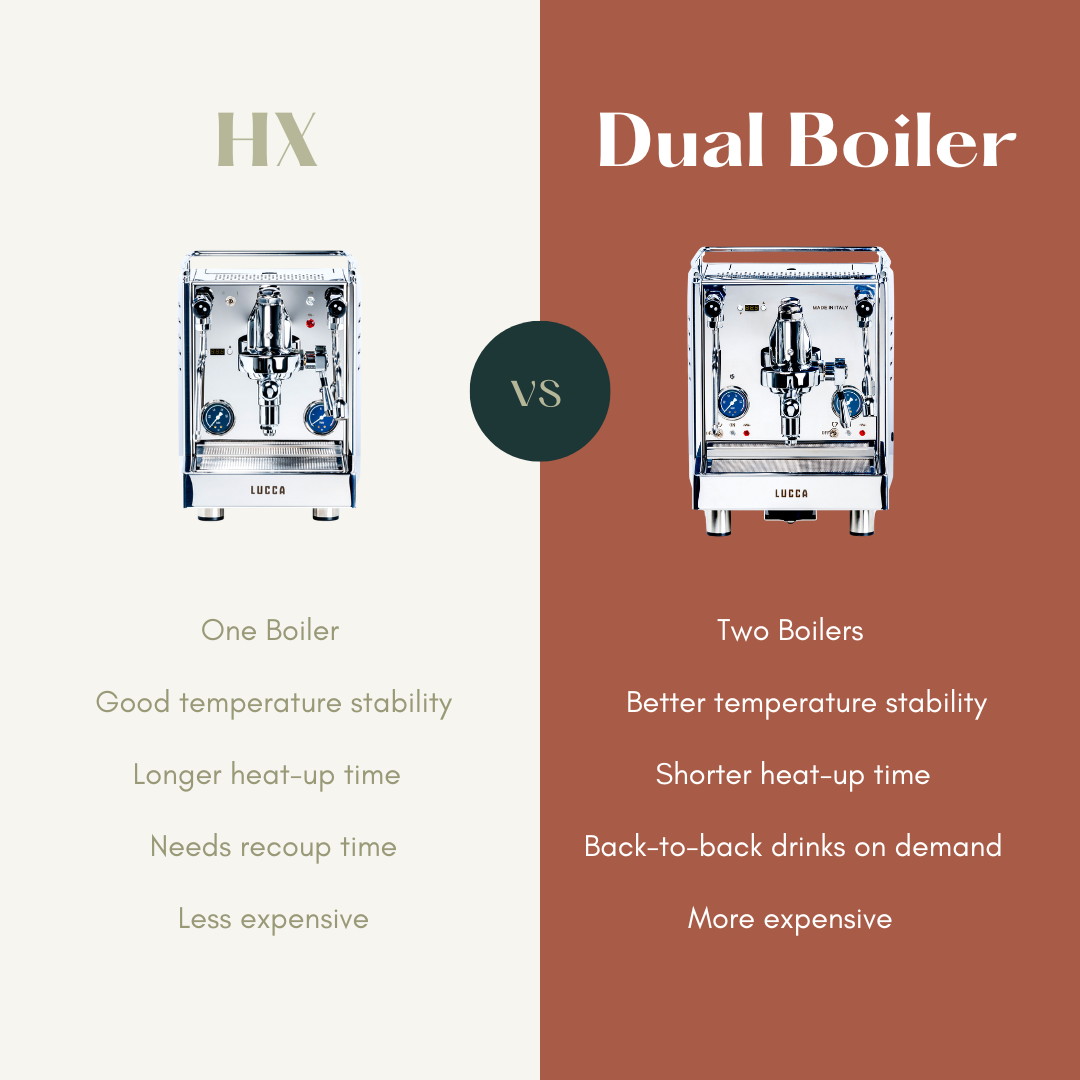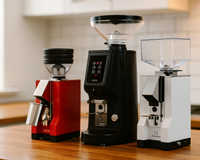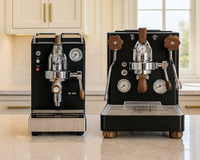Heat Exchanger vs Dual Boiler Espresso Machines: What’s Right for You?
When shopping for a prosumer-level espresso machine, one of the biggest decisions you'll face is choosing between a heat exchanger (HX) and a dual boiler system. Both can produce exceptional espresso and steam, but each comes with unique advantages that can significantly affect your workflow, consistency, and overall experience.
In this guide, we’ll break down the key differences, pros and cons, and who each machine type is best suited for. We’ll also take a brief look at the history behind these technologies and how they’ve evolved to meet the needs of modern home baristas.
What Is a Heat Exchanger Espresso Machine?

A heat exchanger (HX) espresso machine uses a single boiler to brew and steam simultaneously. The main boiler stays at steaming temperature, and a tube running through it (the heat exchanger) brings water to the right temperature for brewing as it flows through.
Key Features:
- One boiler for both brewing and steaming
- Fast warm-up times
- Compact and often more affordable
Pros:
- Quick steam recovery
- No waiting between brew and steam
- Lower cost than dual boilers
Cons:
- Temperature stability can vary, especially with long idle times
- Requires a cooling flush before brewing to avoid overheating
Brief History of HX Machines
Heat exchanger machines rose to prominence in Italian cafés during the mid-20th century. The innovation allowed baristas to steam milk and brew espresso at the same time using just one boiler—a major leap from earlier single-use machines. The thermosyphon system that regulates temperature in these machines is still widely respected for its mechanical simplicity and durability.
Shop Heat Exchanger Espresso Machines >
What Is a Dual Boiler Espresso Machine?

A dual boiler espresso machine features two separate boilers: one dedicated to brewing, the other for steaming. This setup ensures independent temperature control for both functions.
Key Features:
- Two independent boilers
- Precise control with PID on both boilers (in most cases)
- Excellent thermal stability
Pros:
- Ultimate temperature consistency
- No need for cooling flushes
- Ideal for back-to-back shots
Cons:
- Higher cost
- Slightly longer warm-up times
- Larger footprint in most cases
A Quick History of Dual Boilers
Dual boiler technology became popular among professionals and serious enthusiasts in the early 2000s as espresso brewing standards began to demand tighter control over brew temperatures. With the rise of PID (Proportional-Integral-Derivative) controllers, dual boilers offered unprecedented precision and flexibility for advanced brewing techniques like flow profiling and temperature surfing.
Shop Dual Boiler Espresso Machines >
Side-by-Side Comparison
| Feature | Heat Exchanger (HX) | Dual Boiler |
|---|---|---|
| Number of Boilers | 1 | 2 |
| Brew & Steam Simultaneously | Yes | Yes |
| Temp Control | Less precise (no PID) | More precise (PID) |
| Warm-up Time | Faster | Slower |
| Footprint | Smaller | Larger |
| Maintenance | Simpler | Slightly more involved |
| Cost | Lower | Higher |
Real-World Workflow Comparison
Let’s say you’re making two lattes back-to-back. With a heat exchanger, you’ll likely need to flush the group head between shots to stabilize temperature. With a dual boiler, you can simply grind, dose, and brew—with no flush or wait time—because the brew boiler remains rock-solid in temperature. This is particularly helpful if you entertain guests or frequently make multiple drinks in a row.
Best Heat Exchanger Machines (2025)
1. Lelit Mara X

- E61 group head with PID-controlled thermosiphon
- Ultra-compact form factor
- Automatic temperature stability
2. Rocket Appartamento

- Classic Italian design
- High build quality
- Compact and ideal for style-conscious kitchens
Best Dual Boiler Machines (2025)
1. Lelit Bianca V3

- Flow control paddle for manual profiling
- True dual PID system
- Rotational pump, wood accents, tank or plumb-in
2. Profitec Pro 700

- German-engineered precision
- Optional flow control upgrade
- Dual PID with massive steam power
Related: Lelit Bianca V3 vs. Profitec Pro 700: Which Should You Choose?
Which Machine Is Right for You?

Choose a Heat Exchanger If:
- You want to save counter space and budget
- You’re making 1–3 drinks per session
- You prefer simplicity and classic espresso
Choose a Dual Boiler If:
- You pull multiple shots daily or entertain guests often
- You want to experiment with different brew temps or profiles
- You’re chasing the most consistent results possible
Related: Is a Dual Boiler Espresso Machine Worth It?
Final Thoughts
Both heat exchanger and dual boiler espresso machines have their place in the home barista world. HX machines like the Mara X offer an affordable, compact way to step up your espresso game, while dual boilers like the Bianca V3 and Pro 700 provide barista-level control and precision.
Still not sure? Talk to our team—we'll help match you with the perfect machine.
Ready to shop?
Explore All Espresso Machines →















